Viewing and Analysing the Data¶
Once you have completed your search, you view details of a particular record by clicking on the Metadata button.
The metadata profiles used by GeoNetwork opensource to present and describe geographic data and general documents stored in the catalogue are based on the International Standard ISO 19115:2003, encoded according to the implementation schema 19139:2007, the FGDC and the international standard Dublin Core.
In this guide the ISO 19139 metadata implementation will be described in details since it is also suggested as profile for the creation of new metadata records.
Metadata Description¶
The metadata ISO 19139 profile used by GeoNetwork opensource to describe the geographic data and services is based on the ISO standard 19115:2003 and provides information related to the identification, the maintenance and constraints, the spatial and temporal extent, the spatial representation and reference, the quality and distribution of a geographic dataset.
The metadata profile is organised in sections and the most important, illustrated below, are the: Identification Section, Distribution Section, Reference System Section, Data Quality Section and Metadata Section. These sections are described here in details.
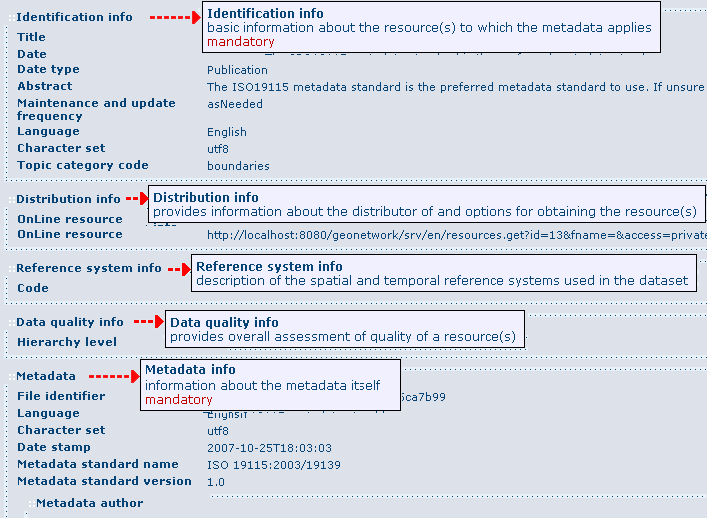
Main metadata sections
Identification Section¶
This section includes information on the citation of the resource (title, date of creation or publication, edition, presentation form), the abstract, the purpose and the present*status* of the resource that can be defined among the options: completed, historical archive, obsolete, ongoing, planned, required or under development.
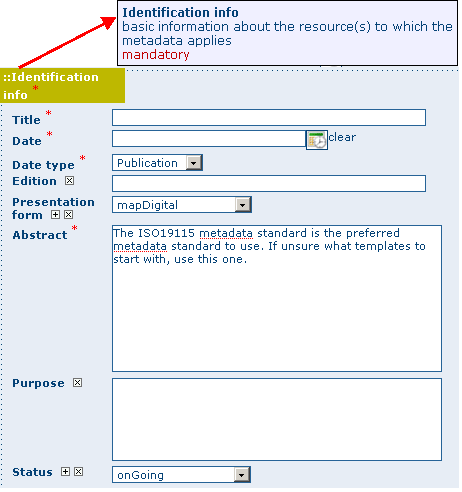
Identification information
This section also contains information about the person or organisation responsible for the data and who is considered to be a point of contact for the resource i.e. the dataset owner, originator, distributor, publisher, etc. and it provides information on data maintenance i.e. annually, monthly, daily, not planned, as needed, etc.
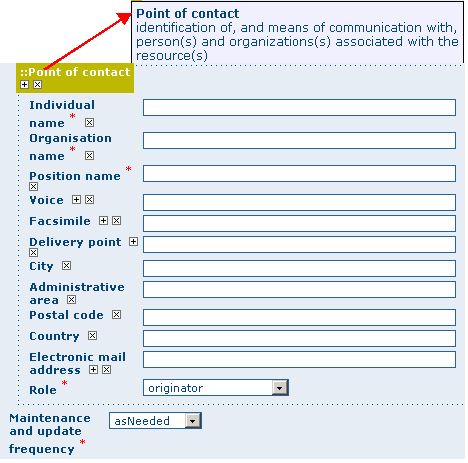
Point of Contact
Elements for keywords and for describing restrictions on data access and use are also included in this section in addition to spatial representation info like data type (vector, raster, text table, etc.)
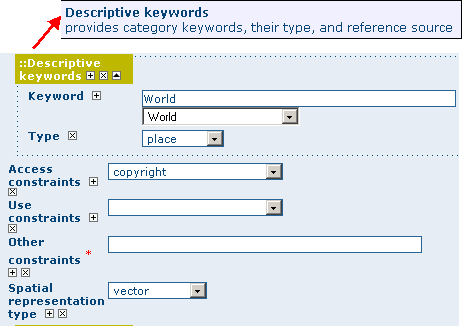
Descriptive keywords
The identification section provides information about the scale, the language and character set used within the resource and the list of ISO categories through which your map could be classified.

Scale and other data properties
Finally, the temporal and spatial extent are also defined in this section. The temporal extent is defined through the starting and ending date of data validation.

Temporal extent
The spatial extent of the interested area is defined through geographic coordinates or through the selection of a country or region from a predefined list. Free text supplemental information can be added to complete the data identification section.
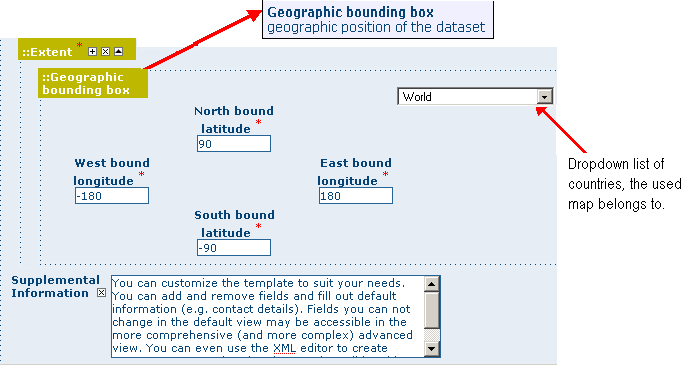
Geographic bounding box
Distribution Section¶
This section provides metadata elements for accessing other useful on-line resources available through the web. The distribution elements allow for on-line access using an URL address or similar addressing scheme and provide the protocol for the proper connection for accessing geographic data or any other types of digital documents using the download function. Furthermore, it is possible to link a metadata with a predefined map service through the online resource and see the map interactively.
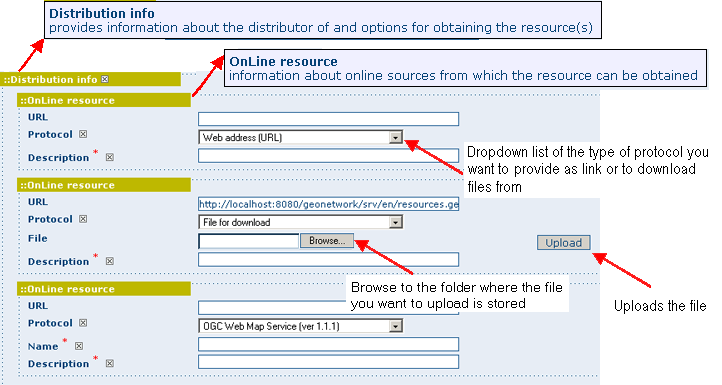
Distribution information
Reference System Section¶
The Spatial Reference System section defines metadata required to describe the spatial reference system of a dataset. It contains one element to identify the name of the reference system used. Using elements from the advanced form, this section may be modified to provide more details on data projection, ellipsoid and datum. Note that if this information is provided, a reference system identifier is not mandatory.

Reference system
Data Quality Section¶
The Data Quality section provides a general assessment of the quality of the data. It describes the*different hierarchical levels of data quality*, namely a dataset series, dataset, features, attributes, etc. This section also contains information about sources of the input data, and a general explanation of the production processes (lineage) used for creating the data.
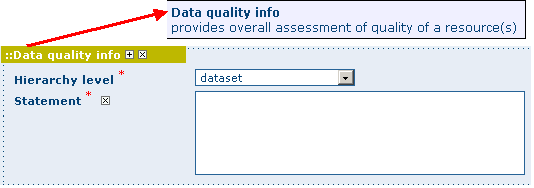
Data quality
Metadata Information Section¶
This section contains information about the metadata itself: the Universally Unique Identifier (UUID) assigned to the record (this is the ‘File identifier’), language and characterset used, date of last edit (‘Date stamp’) and the metadata standard and version name of the record. It also contains information on the metadata author responsible for the metadata record; this person can also be a point of contact for the resource described. Information on the Metadata author is mandatory.
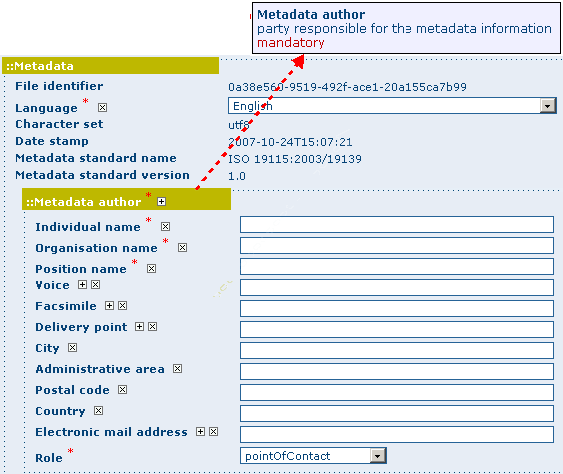
Metadata properties



